What can be made of?
The decorative dry stream fully justifies its name: it looks like a dry stream left without water. Dry streams in the country are made from what is at hand in large quantities.
The basis of an artificial dry stream is usually stones: large cobblestones, medium gravel, small pebbles. The latter is usually used in conjunction with large stones, making a side or decorating a dry stream on the site from the inside.
There are certain advantages to using stones:
- near rocks or water it is easy to get absolutely free;
- stones are not afraid of wind, rain, snow - a dry stream in the country will look great all year round;
- the stone river will last for more than a dozen years, until you yourself decide to disassemble it.
If you are designing in a southern style, try mixing stones with sand: a sandy path, surrounded by a light stone border, looks appropriate within certain directions.
See also options for plants and flowers that can be planted along the fence.
Less reliable, but no less beautiful, is a dry stream of flowers. It is necessary to plant a flower bed in such a shape that it resembles the flow of water. Experts in landscape design recommend using one variety with white, blue or blue buds - they will bloom in a moment, it will seem like real water is running.
For a dry stream, low, preferably ground cover plants are suitable:
- petunia,
- thyme,
- arabis,
- phlox,
- shaved,
- ageratum.
Important! Plants are capricious in care - planting is required every spring, irrigation system, pruning. But every year there will be a new composition!
Consider the size when setting up a dry stream. A small dry stream, for example, will look more harmonious from small material. Wide, long - from a combination of sizes or large stones.
The photo shows a combination of lawn grass with stones.
Where is the best location?
Before determining the location of the dry stream on the site, think about what exactly you want to achieve with the decoration:
- to do emphasis on buildingsbetween which it is located;
- visually expand the area of \ u200b \ u200bthe garden plot - this is suitable diagonal position;
- ennoble flower beds or other objectsliterally skirting the composition.
Popular places for a dry stream in landscape design are:
- Paths... Let the "flow" along garden paths, or intersect with them, creating an amazing relief. This option looks spectacular in combination with flower beds.which occupy the voids between the path and the "water".
- Boundaries... The dry stream zoning idea is one of the most beautiful. Make a whole composition, separating all areas of the site (house, vegetable garden, gazebo, garden) from each other.
- Flower beds... The design of dry streams in combination with flower beds looks mesmerizing: why not make a stone river part of flower beds? Flowers can be ordinary summer cottages or special aquatic flowers.
- Water bodies... Whether it's a small pond or a warm pool, the imitation of the current will become a framing or a kind of sign for guests (if you let it go from the house towards the water).
In the photo there is a composition with plants, figurines.
Design options
A dry stream of pebbles or other stone still looks like there was water here recently. Let's play with the similarities in design!
Popular decoration - bridges... Decorative or functional - for example, designed to cross a wide river that divides zones.
See also examples of the design of beautiful summer cottages.
A dry stream with a wooden bridge looks harmonious - flat or rounded, with reliable wooden, iron or rope railings.
Important! Supports perform not only decorative, but also protective function. They are especially relevant on high bridges.
Structures made of stone are also appropriate - one flat, large stone of the slate type, or several boulders on a metal structure reinforced with cement mortar.
In the photo there is a pebble installed on the end
Another popular option is a dry stream with a jug or pot. In this case, the imitation of water seems to be poured out of the vessel. Jugs are used to play with the source of flower or stone "water".
Why not combine dry and water elements? Make a fountain the beginning of the stream - the main thing is that the water flow does not fill the mouth, but stops somewhere at the source.
Pictured is an industrial garden design.
Design ideas
The simplest version of a dry stream on the site is a winding path made of stones of approximately the same fraction. But if you connect your imagination, resorting to tricks, you get something completely different from the usual composition.
First ideawhich we mentioned: combine different sizes. Make a gradient from large to small, use large boulders as a side along the shore, place large ones in the center, play with the surrounding circles.
Important! Make curvy lines instead of straight lines - bends look more natural, seem longer, and visually increase the space.
Second tip: put each piece on the end. A dry pebble stream will be the most effective - the general view will be simply cosmic!
Third the proposal is to create a complete composition. Come up with a plot, form, appearance. Add garden figurines to spice up the landscape.
Idea number 4: levels! Who said the current is exceptionally flat? Run it from top to bottom, play with the complex landscape of the site, or simply add dynamism to the design.
How to do it yourself?
It's time to learn how to make a dry stream with your own hands. Anyone can handle the process. Consider a stone composition.
The first step is to plot plan: Draw on a regular A4 sheet, keeping to the scale. Enter all important unchanged objects: buildings, flower beds, beds, ponds, paths.
Moving on to design... Draw future curves where you want to place. When planning, it is easy to change the shape, size, direction.
Important! A curved silhouette with sections of different widths looks the most natural.
Now you need transfer the drawing from the plan to the real relief... Mark the outline with a regular stick or use a suitable surface tool.
Advice! Sketch the outline with sand: just draw the outermost line.
When you were convinced of the calculations - remove the topsoil... 10-15 cm will be sufficient, but a deeper version is also available.
Do not forget protect the future project from weeds - lay geotextile or other non-woven material on the bottom. Cover the ground, cut along the contour. The non-woven fabric provides a 100% protection effect, the sun does not hit the ground and the grass does not germinate.
In the photo there is a finished composition of light stone
Start the main process: laying out stones! It all depends on imagination and skills.
How to create a dry stream of flowers, see the video:
Have you already decided what the design will be? If you haven't decided yet, see a photo of a dry stream of stones in our gallery!

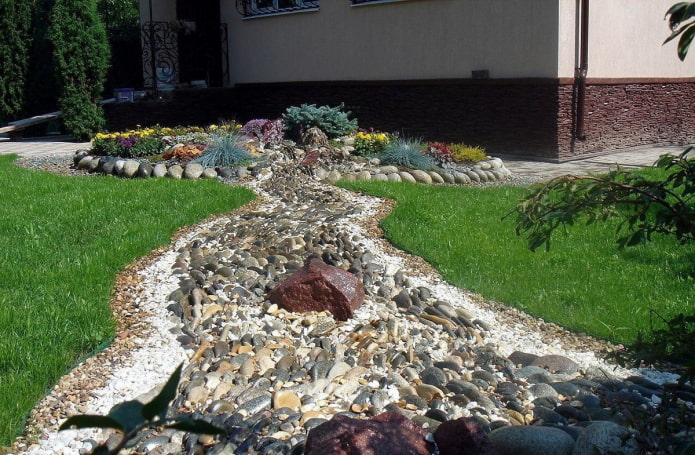
 10 practical tips for arranging a small kitchen in the country
10 practical tips for arranging a small kitchen in the country
 12 simple ideas for a small garden that will make it visually spacious
12 simple ideas for a small garden that will make it visually spacious
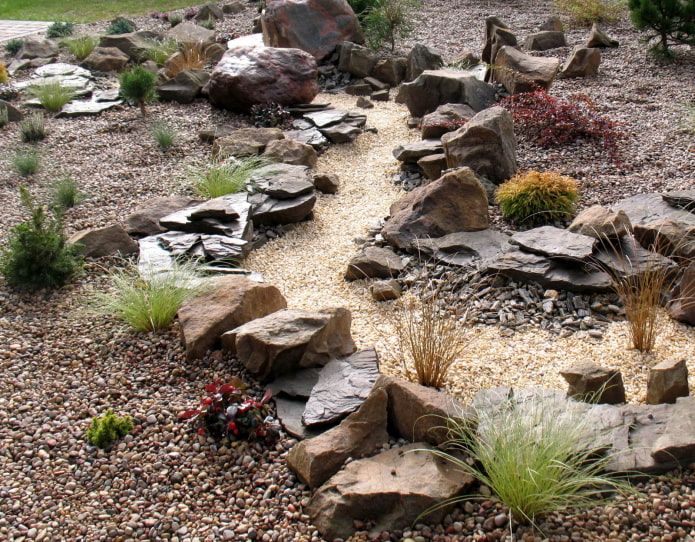
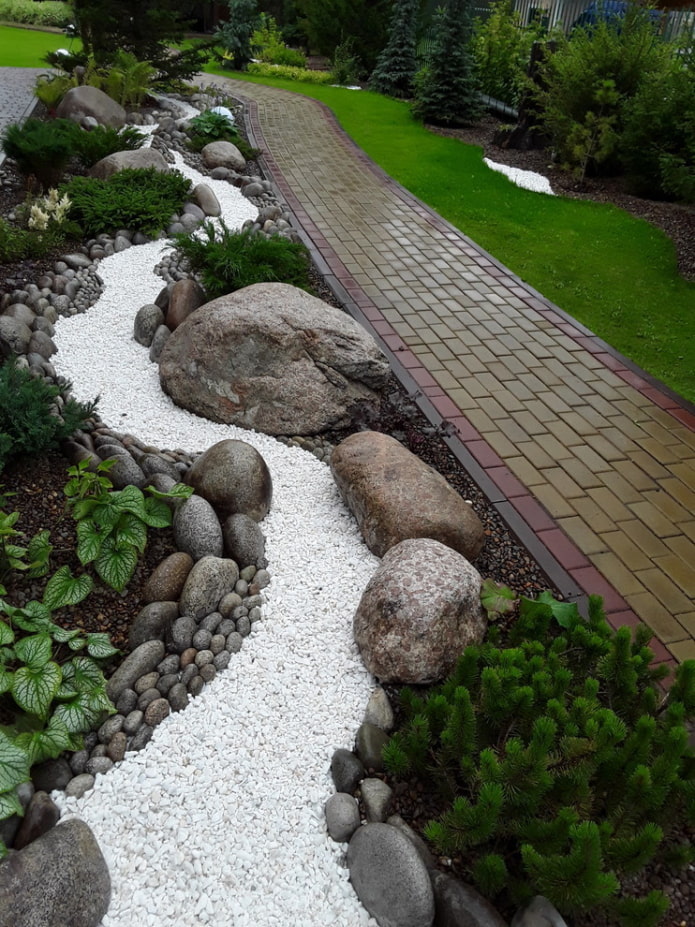
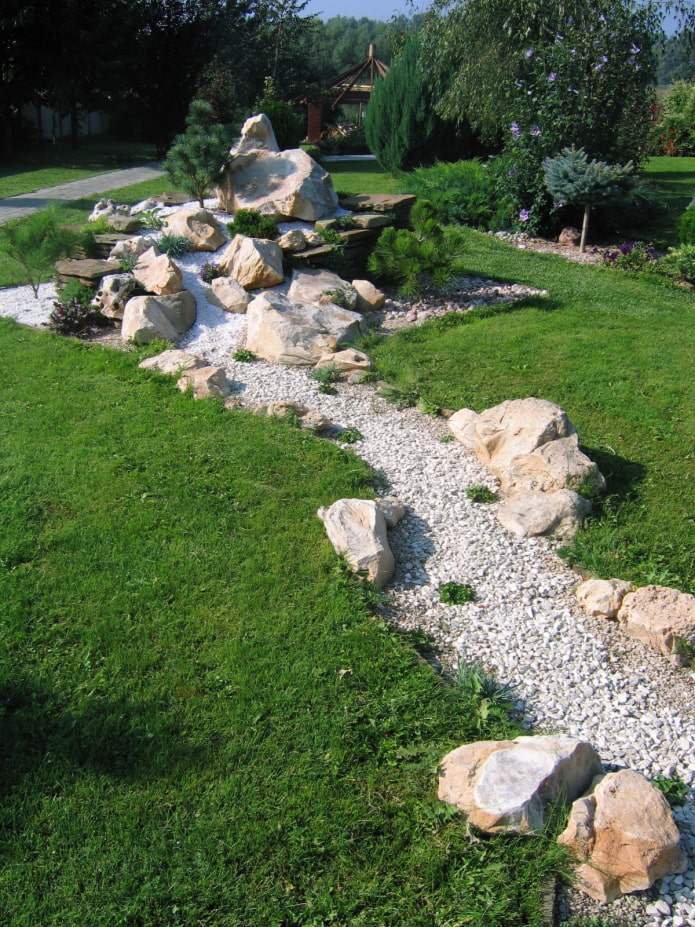
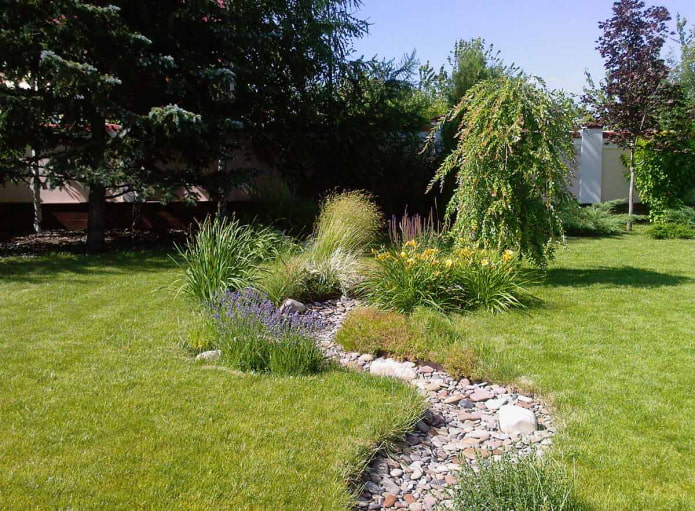
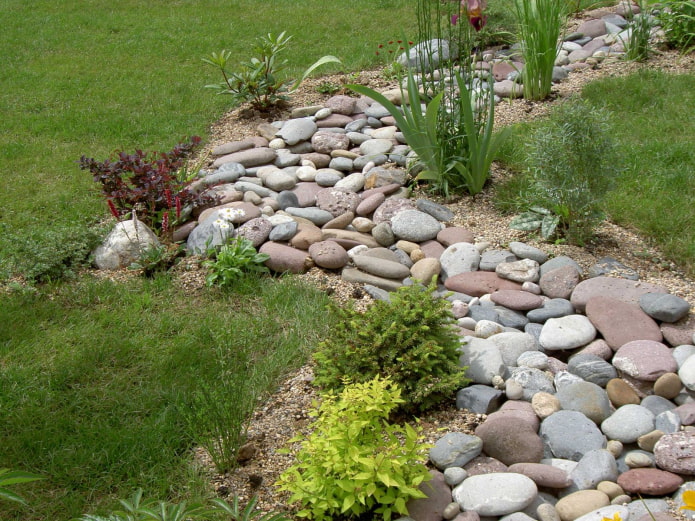
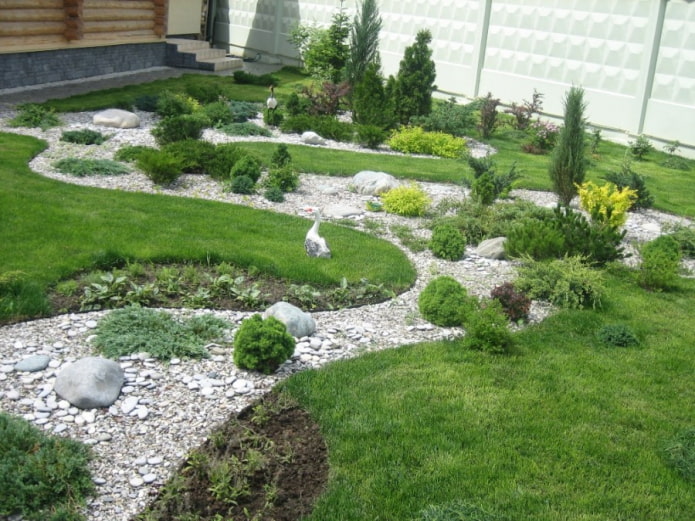
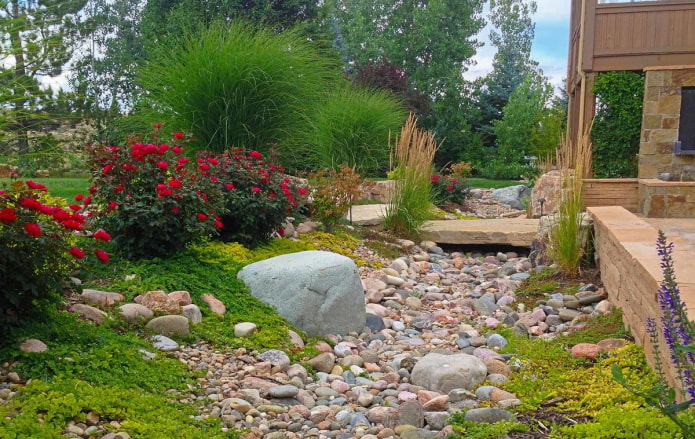
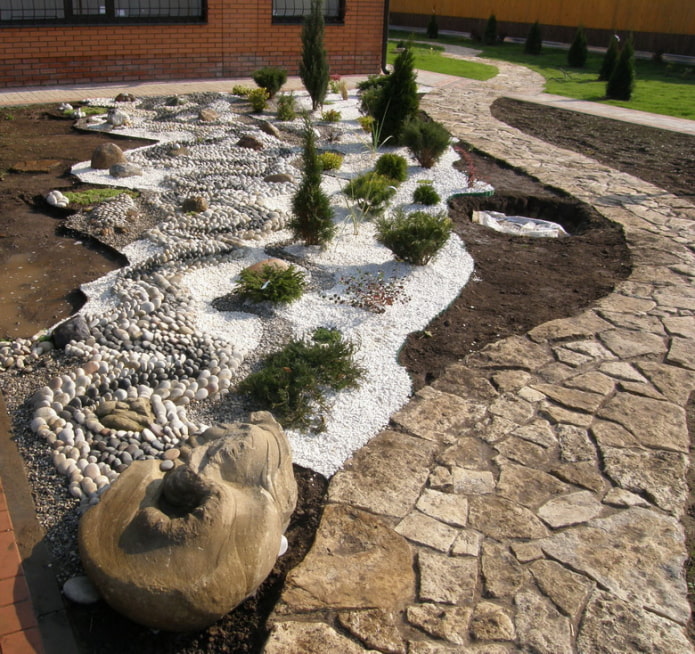

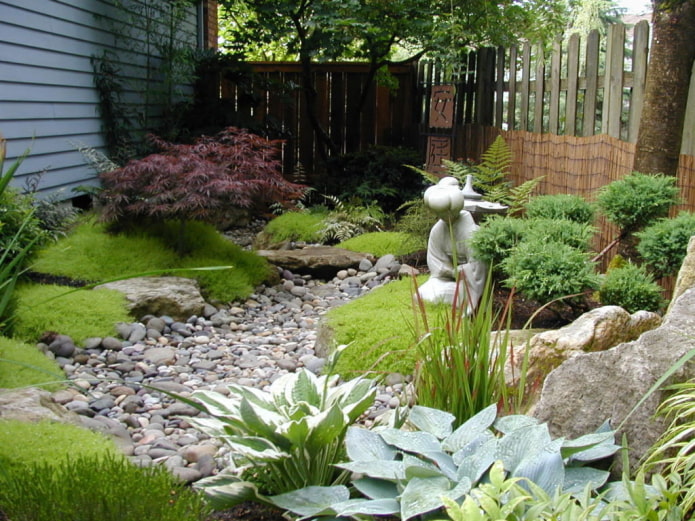


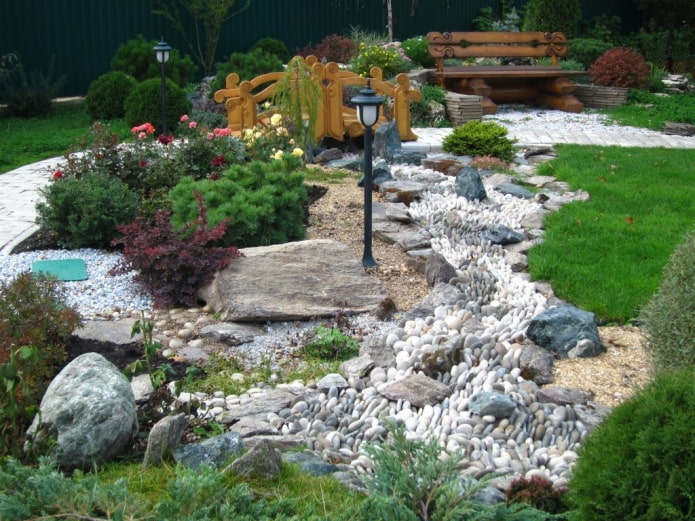
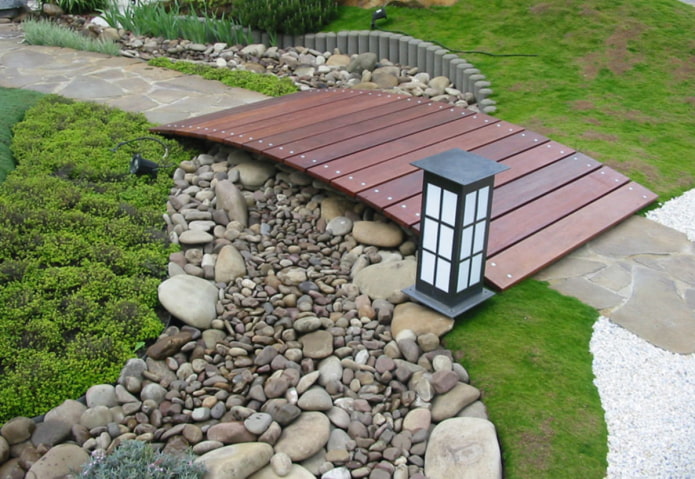

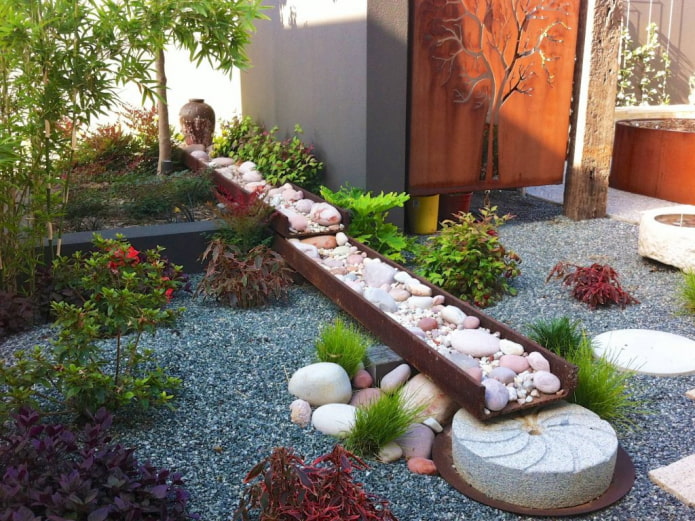
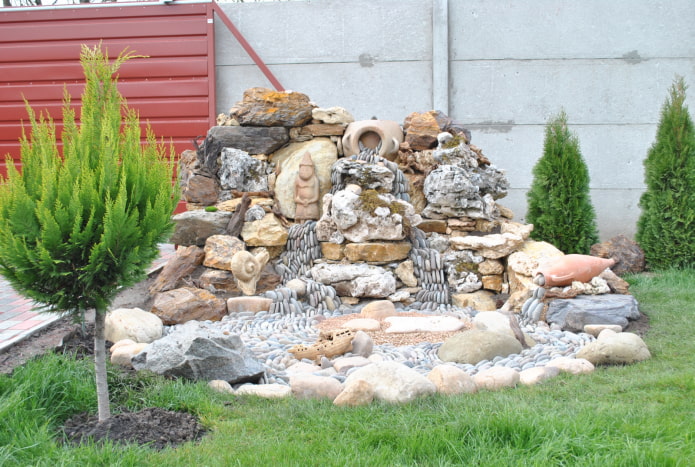
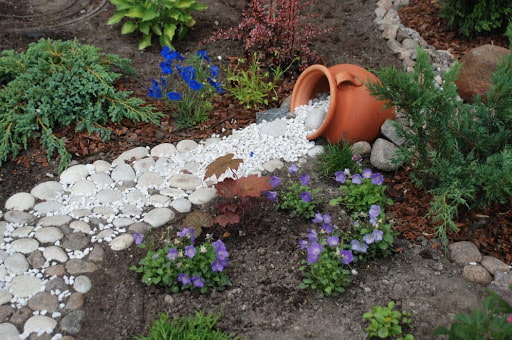
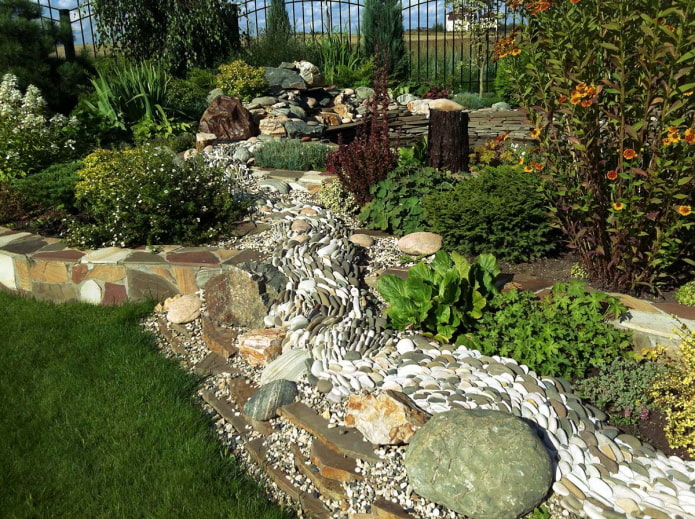
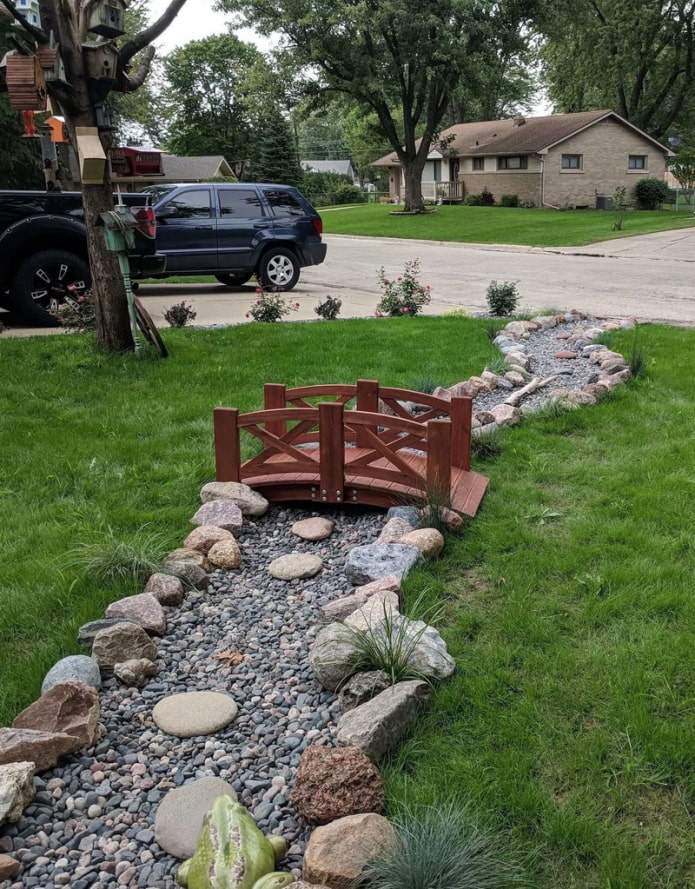
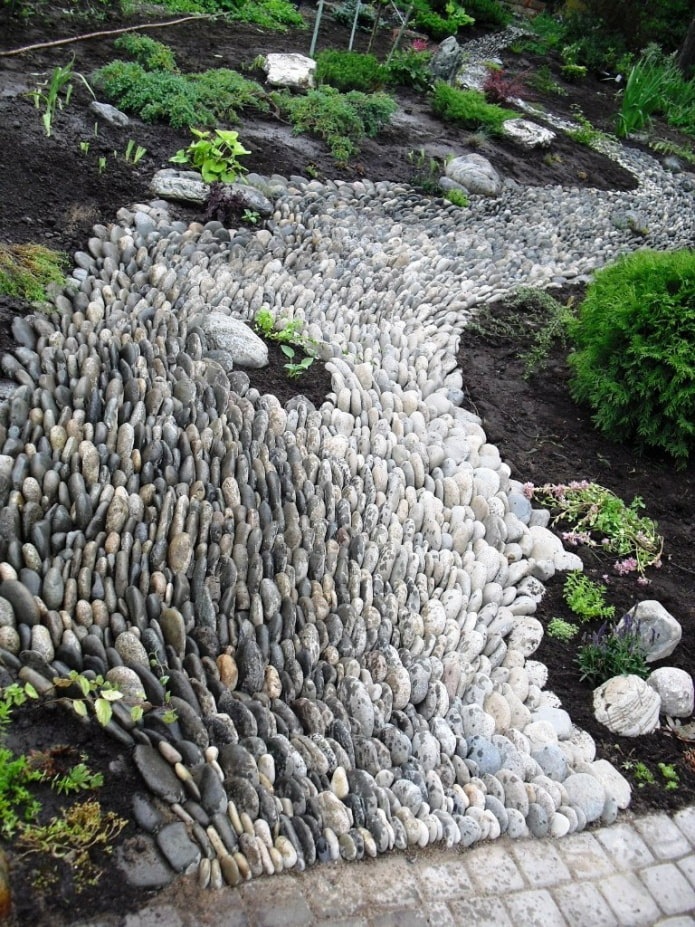
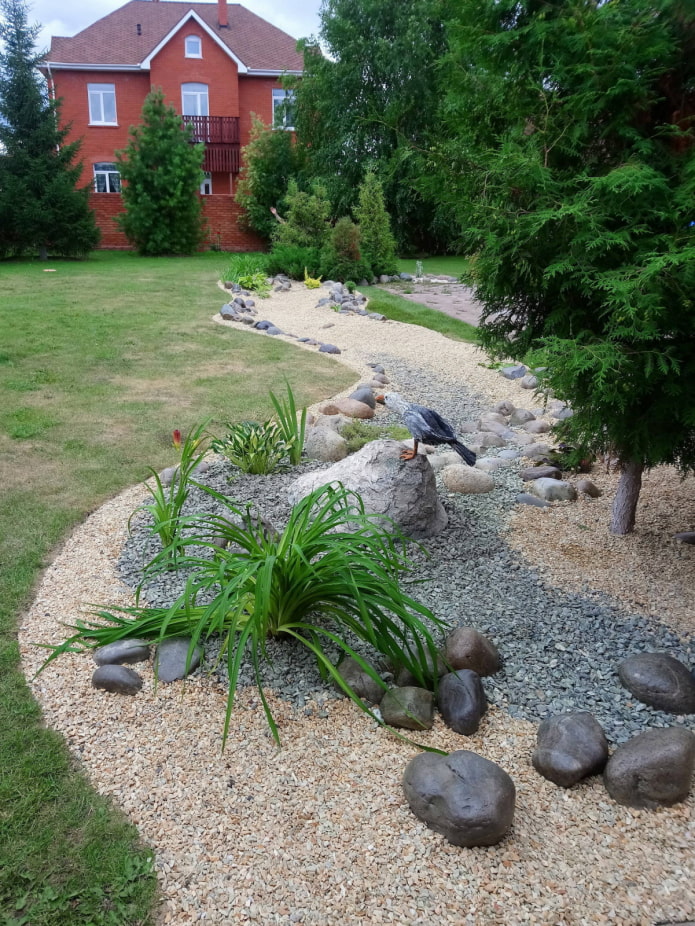
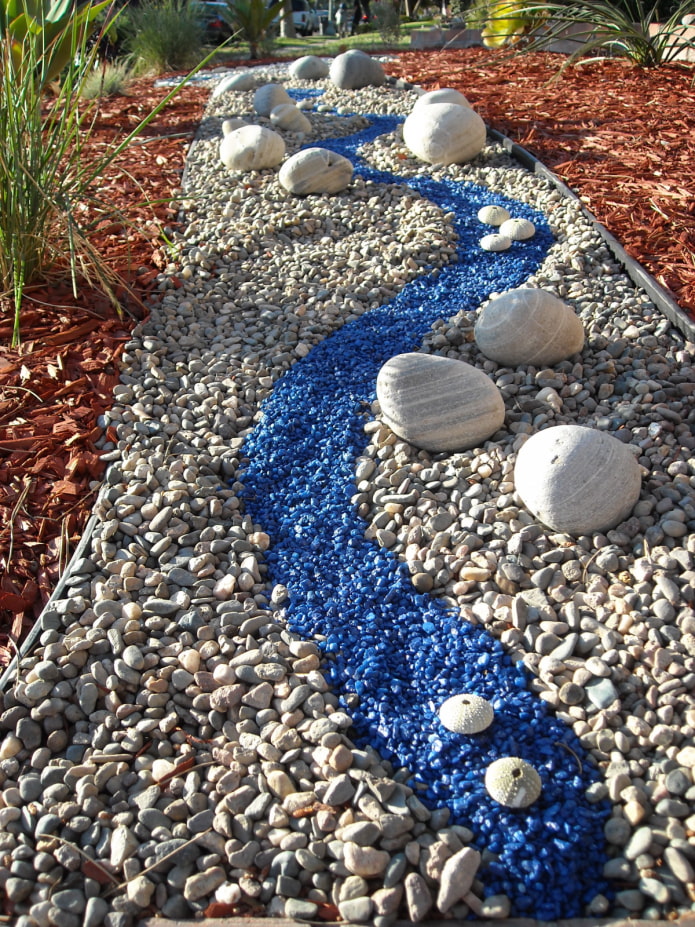
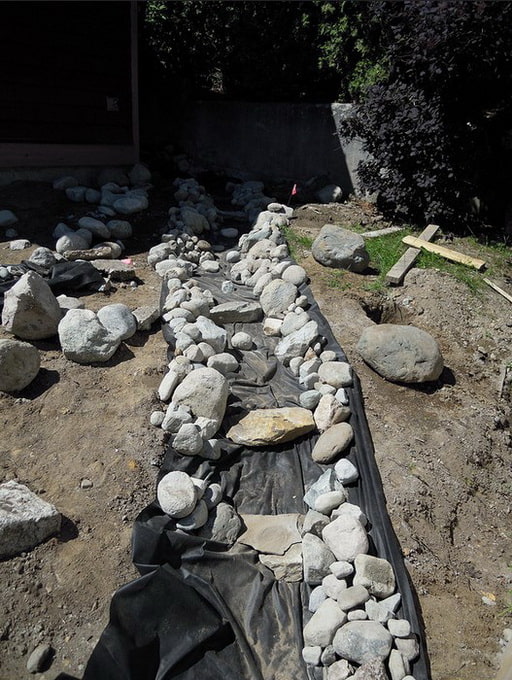

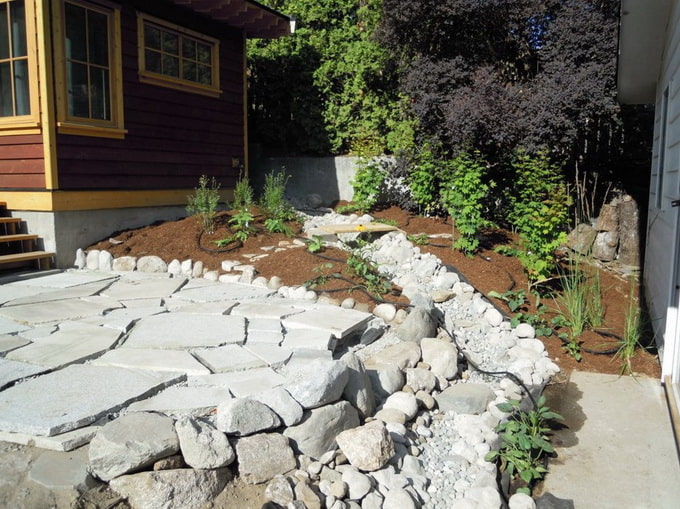
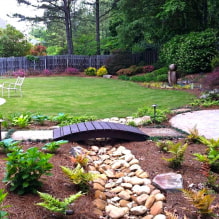


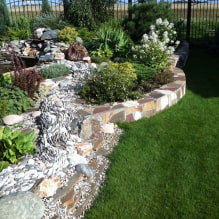
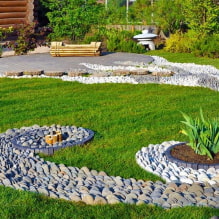
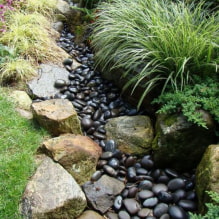
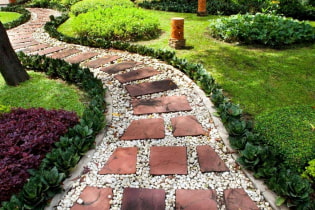 How to decorate garden paths beautifully for a summer residence?
How to decorate garden paths beautifully for a summer residence?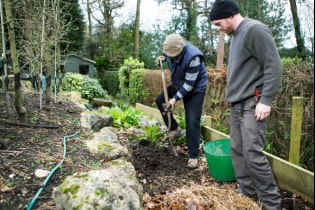 What fertilizers should be used in spring?
What fertilizers should be used in spring? How to use gabions on the site?
How to use gabions on the site?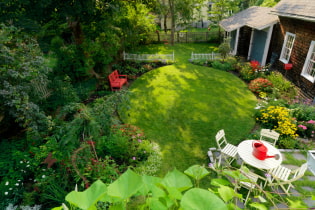 Landscaping of a summer cottage on 6 acres
Landscaping of a summer cottage on 6 acres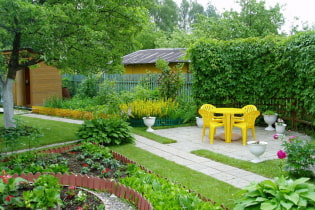 How to arrange the landscape design of a suburban area of 4 ares?
How to arrange the landscape design of a suburban area of 4 ares?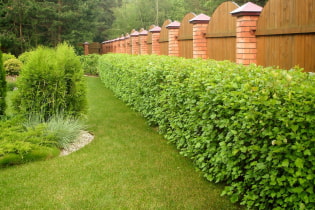 What plants can you make a hedge?
What plants can you make a hedge?